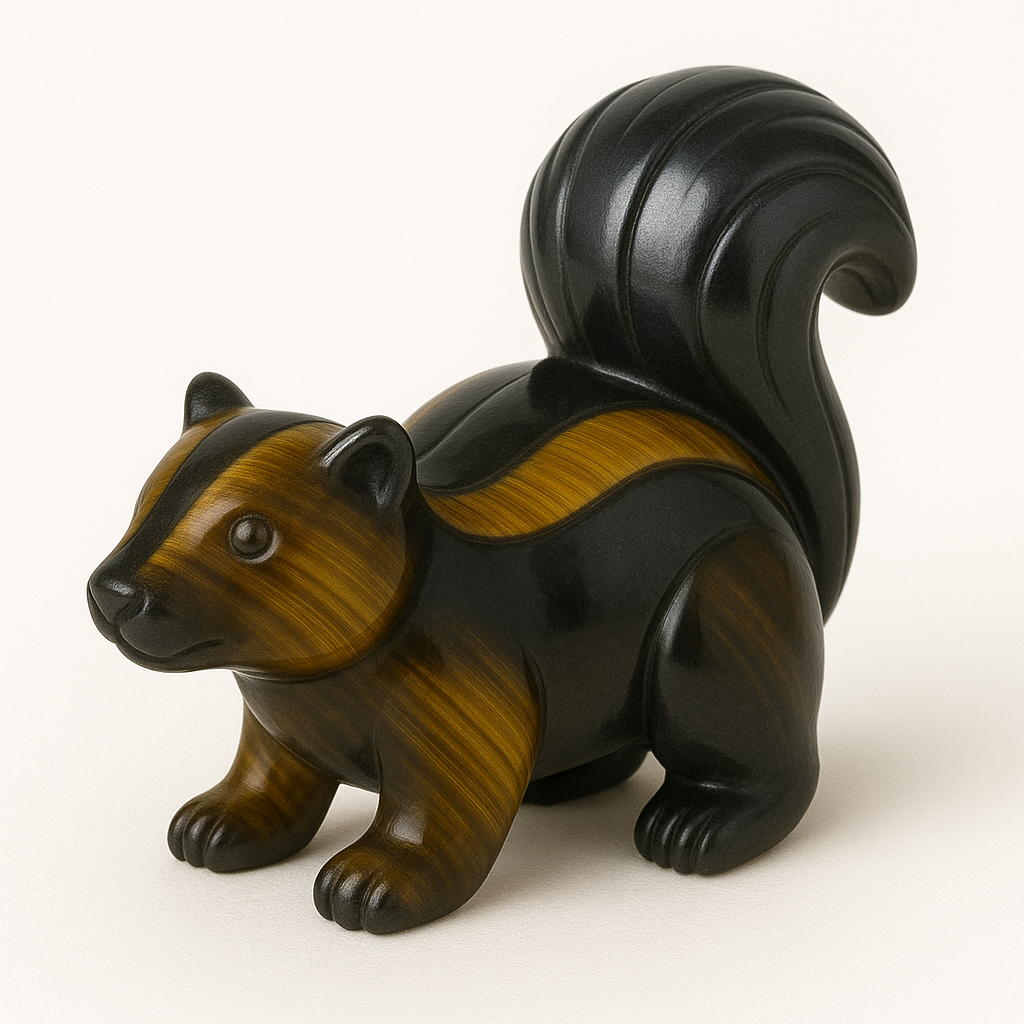
The Symbolism of Skunks
Share
Unhurried and unapologetically present, the skunk moves with a calm confidence that belies its power. It does not chase, nor does it flee. Its strength lies not in aggression, but in the certainty of its own boundary. The skunk is an emblem of self-respect, energetic sovereignty, and the non-violent force of presence that knows its own worth. It does not need to prove—it simply is.
To contemplate the skunk is to encounter the archetype of dignity in stillness, defense through clarity, and power that repels distortion by remaining whole.
The Silent Guardian in Cultural Memory
Though often misunderstood in modern narratives, the skunk holds a revered role in many Indigenous traditions of North America. Among certain tribes, the skunk is a symbol of self-assurance, of one who walks its path untouched—not through dominance, but through the clarity of energetic boundaries.
It is said that those who carry skunk medicine command respect without demanding it. They do not need to shout, nor seek confrontation. Instead, their field speaks for them. The skunk becomes a living lesson in how the aura, when aligned, does the work of protection without force.
In folk traditions, the skunk was recognized as a creature who does not initiate, but who cannot be ignored. Its method of defense—strong yet non-lethal—reflects an intelligence that seeks not destruction, but clear and lasting distance from violation.
In all cultural reflections, the skunk embodies non-reactive strength, a kind of spiritual perimeter that remains untouched unless trespassed—and then only once.
Stillness, Scent, and Energetic Clarity
The skunk does not run. Its walk is slow, even graceful, as if nothing could disturb it. And indeed, most creatures avoid it—not out of fear of violence, but because of the unmistakable power it holds in reserve.
Its defense is energetic first. Its black-and-white markings are a natural signal, a visual message that says: I am not to be interfered with. If that signal is ignored, the skunk does not escalate with rage. It gives warning. And only if further pressed does it release a defense so potent that memory itself is altered.
This is not vengeance—it is precision, a clear boundary expressed only when necessary, and a non-lethal correction that teaches without harm.
The skunk teaches that true power is never desperate. It is calm, intentional, and always held in alignment with self-respect.
Resonance with the Energy Centers
The skunk resonates primarily with the yellow-ray energy center—the solar plexus chakra, which governs personal identity, boundaries, and the clear projection of self into the collective field.
Its every motion reflects yellow-ray clarity. It does not second-guess. It does not diminish. Its energy communicates silently: this is where I end, and where others must choose whether to honor that line. The yellow-ray in the skunk is refined—it has no need to dominate, only to be.
There is also a secondary resonance with the red-ray energy center—the root chakra, which governs territory, embodiment, and survival through grounded instinct.
The skunk’s confidence in its body, its physical presence, and its direct response to encroachment all reflect a well-integrated red-ray. It feels no anxiety in stillness, because it knows it is safe. It teaches that when the root is secure, the self can remain calm in any environment.
Together, yellow and red shine through the skunk as:
boundaries embodied,
dignity grounded,
and a self who does not ask for space, but claims it silently.
The One Who Defends Without War
To walk with the skunk is to learn that true respect begins within, and that power does not need to strike to be felt. The skunk invites the seeker to establish inner sovereignty, to cultivate calm presence, and to trust that when aligned, others will feel it without a word.
The skunk does not posture.
It stands.
It does not shout.
It radiates.
It teaches:
Hold your field.
Respect your path.
And let your presence speak what words never could.